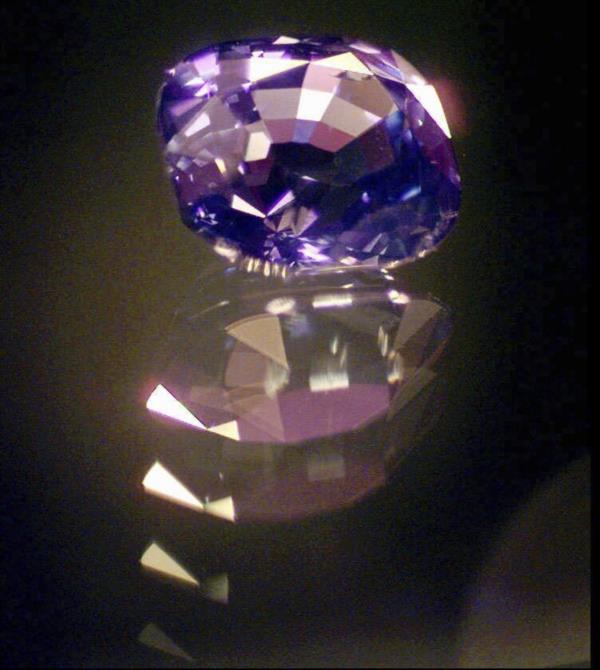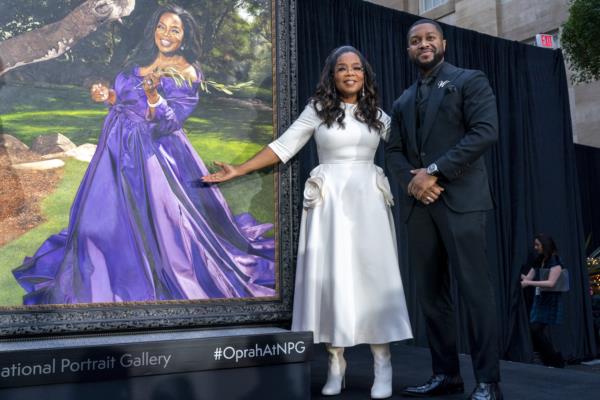
Have you ever stopped to consider the power of purple? That vibrant hue nestled between blue and red, bursting with ambition, luxury, and creativity? Well, get ready because purple is making its majestic entrance into the world of cinema with the release of the second film adaptation of Alice Walker's mesmerizing novel, 'The Color Purple.' Move over pink, there's a new contender in town!
Purple has always played a significant role in history and culture, symbolizing independence, pride, and magic. It can represent so many things, from power and ambition to peace and mystery. Just like its frothier cousin, pink, purple has a multifaceted personality that demands attention.
In Walker's novel, the main character Celie yearns for a pair of purple shoes but settles for blue due to financial constraints. The desire for that regal shade highlights the allure of purple and its association with something longed for. Even Oprah Winfrey, who starred in the 1985 film adaptation, has embraced purple as a powerful symbol. She frequently dons purple to promote the new musical based on the book and even wore a stunning purple taffeta gown for her National Portrait Gallery portrait. Oprah believes that purple is 'seminal' and she's not alone in her appreciation.










Laurie Pressman, the vice president of the Pantone Color Institute, describes purple as a shapeshifter, a color that stands out, makes a statement, and possesses a unique presence in the world. From the significance of purple dye in ancient Rome, where it was reserved for nobles and royalty, to its appearance in iconic songs like Prince's 'Purple Rain' and Jimi Hendrix's 'Purple Haze,' this color holds immense cultural weight.
Purple has always been associated with something extraordinary and scarce. In centuries past, it took an abundance of mollusks to produce just a tiny amount of purple dye. The Romans, enamored by the Greeks' fascination with the color, introduced the world to their famous 'purpura.' Cleopatra herself, known for her love of purple, captivated Julius Caesar, who adopted the hue as his own. Tyrian purple, named after the town of Tyre in Lebanon, came in various hues, from rose-red to velvety black.
Fast forward to the fascinating world of music, where purple has made its mark in unforgettable ways. Prince, the embodiment of purple, cemented the color's association with his iconic song, 'Purple Rain.' His theatrical persona, purple attire, and soul-stirring performances forever etched purple into the realm of music history. Prince's death in 2016 prompted his estate to collaborate with Pantone, resulting in the creation of 'Love Symbol #1,' an official shade of purple in his honor.
But what does purple truly signify in the realm of music? According to Nate Sloane from the University of Southern California's Thornton School of Music, purple's ambiguity grants artists the freedom to explore a myriad of emotions and concepts without being confined to a specific meaning. Purple becomes a vessel for expression.
Speaking of vessels, let's set sail onto the shores of literature, where purple prose once reigned supreme. The term originated from Horace's 'Ars Poetica,' warning against the use of irrelevant and excessively ornate passages. Purple prose became synonymous with overindulgent writing, laden with flowery descriptions and unnecessarily complex structures. It reached its peak in the 19th century when writers were paid based on the number of words or pages they produced. However, the decline of vocabulary and reading comprehension in the 20th century reshaped purple prose into a pejorative term, signaling a lack of substance.
As we delve into the canvas of visual art, purple emerges as a favorite among renowned artists such as Monet, Chagall, and Matisse. Monet, in particular, incorporated violet hues into his famous series of paintings, mesmerizing viewers with the delicate beauty of his brushstrokes. Purple, with its tendency to tire the eyes, often conveys lust or sorrow within major artworks.
Interestingly, the world of visual art owes a debt of gratitude to John Goffe Rand, an American portrait painter. In the 1840s, Rand invented the collapsible tin tube, revolutionizing the way artists stored and used paint. This invention brought forth a plethora of new pigments, including the affordable and awe-inspiring manganese violet. Historically, it marked a turning point in the world of color.
So next time you come across that magical shade of purple in a field or anywhere else, take a moment to appreciate its rich history and the many layers of meaning it holds. Whether it's the regal dyes of ancient Rome or Prince's infectious melodies, purple has left an indelible mark on our culture. So, don't walk by that color unnoticed, for as Shug so wisely said, it just might piss off God.







